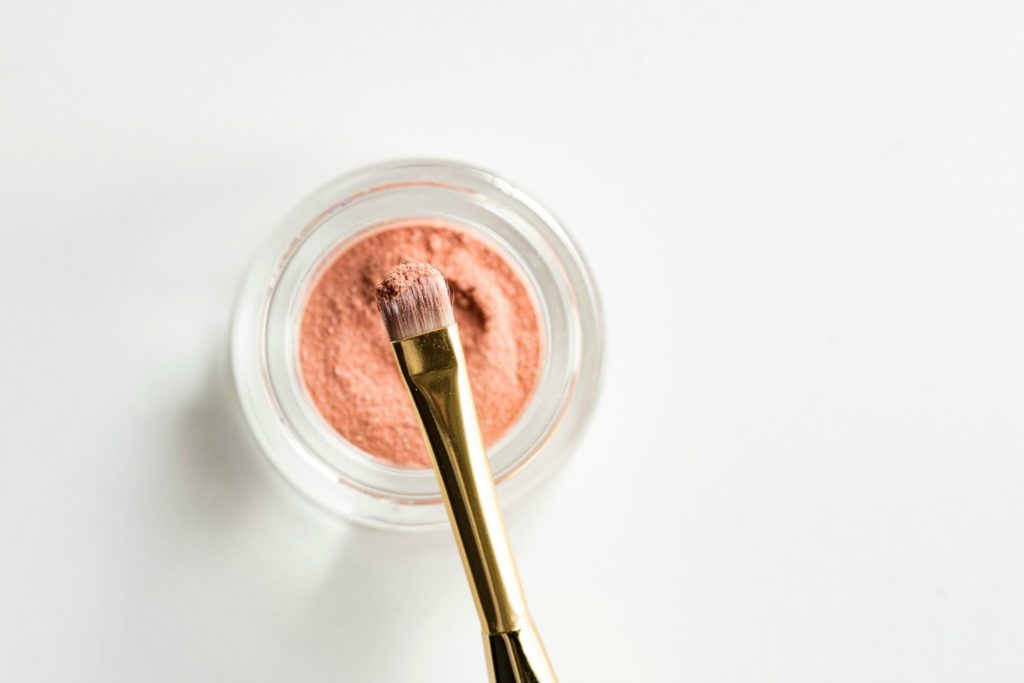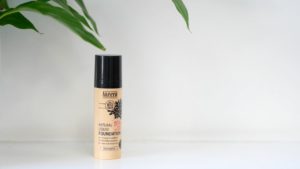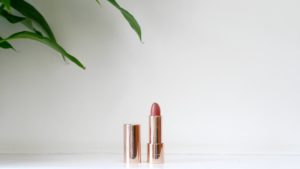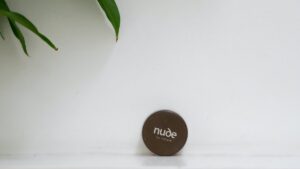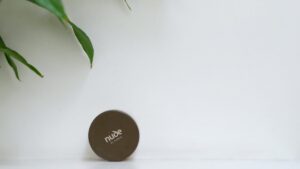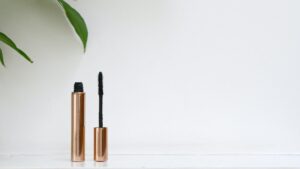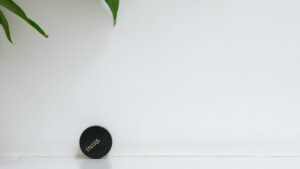The majority of make-up products are filled with chemicals, and whilst some of these chemicals are non-harmful and vital to make sure the product is stable and safe for use, there are some common chemicals that are used, which can easily be removed or replaced with non-harmful alternatives.
It’s important to remember not to be afraid of chemicals, some chemicals are totally fine and have been put through crazy amounts of testing to ensure they’re safe for human use, however if you have sensitive skin or suffer from skin conditions like eczema, certain chemicals can cause a reaction or flare-up due to the harsh nature of them. We’ve rounded up the key chemicals to avoid in make-up products if you have sensitive skin.
Talc
You’ve likely heard of the lawsuits in the US that have happened because long-time customers have claimed that talc caused their gynecological cancer, but did you know that talc is generally pretty horrible for your skin? It’s incredibly drying so isn’t a great ingredient for those with eczema and dry skin, and is found in the majority of eyeshadows, powders, and other powder-based make-up products like bronzer and blusher.
Mica
Mica is a sparkling powder often found in mineral make-up, which is spouted as being better for your skin than normal liquid make-up. Nah-uh. It definitely is not! Actually, a lot of mineral make-up contains just as many chemicals as liquid foundation, and can actually be worse for people with dry skin because of these drying chemicals.
The problem is that Mica is is a silicate mineral, which is technically ‘natural’ so companies can put ‘natural’ on the packaging, which is highly misleading.
There have also been numerous reports about the unethical nature of mica mining, as well as lung scarring from long-term exposure to mica, as mica is so fine that it is easily inhaled into your lungs and can easily be absorbed by the skin into the body. Imagine using mica products every single day from the age of 15, and now imagine what that’s doing to your lungs as you’ll be breathing in mica nanoparticles every time you swipe the powder over your face and nose!
Fragrance/Parfum
Fragrance is an ingredient that can flare-up eczema, cause contact dermatitis, and cause issues for asthmatics. Fragrance is found in pretty much every type of beauty product, and is what covers up the natural smell of a product to make it smell nicer. It’s a well-known allergen that apparently has the same effect as the likes of poison ivy on the skin!
On labels it can be really misleading as companies don’t legally have to specify what their fragrance is made up of. So it could be a bunch of synthetic or natural ingredients, but all of them will just be listed under ‘Fragrance’ meaning you have no idea what’s actually in the product.
The best thing to do is look for brands that just use plant and flower extracts, or essential oils, rather than fragrance, however it’s also important to remember that some essential oils can also be allergens for certain people.
Titanium Dioxide
Most commonly used in sunscreen, toothpaste, and mineral powders, Titanium Dioxide is a naturally-occurring mineral that is white in color, opaque, and has the ability to refract light. The ingredient is therefore often used as a pigment, brightener, and opacifier, in mineral make-up. Similar to Mica, it allows brands to use the word ‘natural’ on their packaging because technically it is a natural product…just not a very healthy one!
Depending on how it’s used Titanium Dioxide can be both safe and unsafe, but in powder form it is a known carcinogenic as it can easily be inhaled into the lungs and cause chaos when it builds up. In nanoparticle size it is as its most dangerous, and should be avoided in all powdered make-up by everyone, but especially if you suffer from asthma and have a respiratory condition.
In sunscreen it is generally safe, unless it is nanoparticle size as the skin can then absorb the mineral. If it says ‘Titanium Dioxide’ on the label, contact the company and ask the particle size, and they should be able to tell you. Some sunscreens will even label their products as ‘non-nano’ to make it clear.
Parabens
Parabens are used as preservatives in make-up, haircare, and skincare products. They are used in cosmetics to prevent the growth of harmful bacteria and mold, however there are less harmful preservatives that can be used instead of parabens.
Due to their ability to mimic estrogen, parabens have the potential to cause endocrine disruption, cancer, and developmental and reproductive toxicity. There was a famous study in 2004 where parabens were found in cancerous breast tumors. It’s also thought that parabens can cause malignant melanoma if used over a long period of time (for example, in your daily moisturiser and/or haircare products).
The main alternatives to parabens are phenoxyethanol (which can flare-up eczema, but is still a better alternative than parabens), and better still, some companies don’t use any preservatives at all (although these products have a much shorter shelf-life of 6-12 months).
Bismuth Oxychloride
Bismuth is actually very similar to talc, only it’s worse. It’s made from a by-product of lead and copper metal refining, and is mixed with chloride and water to create a shimmery synthetic pearl.
Like Mica it’s a very common ingredient in ‘mineral’ make-up, and should be avoided by those with sensitive skin and eczema as the crystalline structure of Bismuth Oxychloride means it can get stuck in your pores and cause irritation and a reaction.
Methylchloroisothiazolinone (CMIT) & Methylisothiazolinone (MIT)
Methylisothiazolinone (MIT) and Methylchloroisothiazolinone (CMIT) are common preservatives found in numerous liquid-form personal care products such as skincare, haircare, and make-up.
They have been linked to allergic reactions, as well as lung toxicity. The two chemicals are two of the most common and prevalent contact allergens found in cosmetic products, especially when they are combined in a product together.
Mineral Oils
Mineral Oils is a tough one. There are many arguments for and against them, as while they’re actually not ‘toxic’ due to the way they’re refined and processed, long-term they can cause dry skin problems as mineral oils ‘over-hydrate’ the skin if used regularly (for example, used daily in a body moisturiser, face moisturiser, lip balm, etc etc).
Essentially if you use mineral oils regularly long-term, various cellular processes will work less efficiently. This then leads to your skin not being able to protect itself and you’ll find yourself in a nasty circle; your skin will quickly dry out if you don’t put any cream on and so you keep applying it over and over again, repeating the cycle.
Ideally you want to move away from mineral oils and use them as little as possible to prevent this from happening. Mineral oils to avoid include; paraffinum liquidum, liquid paraffin, liquid petroleum, paraffin oil, petrolatum liquid, petroleum oil, white oil, and white mineral oil.
Formaldehyde
Formaldehyde is another common ingredient that has been linked to cancer and allergic reactions, and is banned in Japan, Sweden, and heavily restricted in Europe. It’s a popular ingredient in shampoo, nail polish, body wash, and baby care products.
It’s especially important to avoid buying hair salon hair-care products (you know, the ones hairdressers try and persuade you to buy at the end of every hair appointment!), because hair salon products are somehow apparently exempt from labelling laws.
On the label Formaldehyde is also known as: quaternium-15, DMDM hydantoin, imidazolidinyl urea, diazolidinyl urea, polyoxymethylene urea, sodium hydroxymethylglycinate, 2-bromo-2-nitropropane-1,3-diol (bromopol) and glyoxal.

